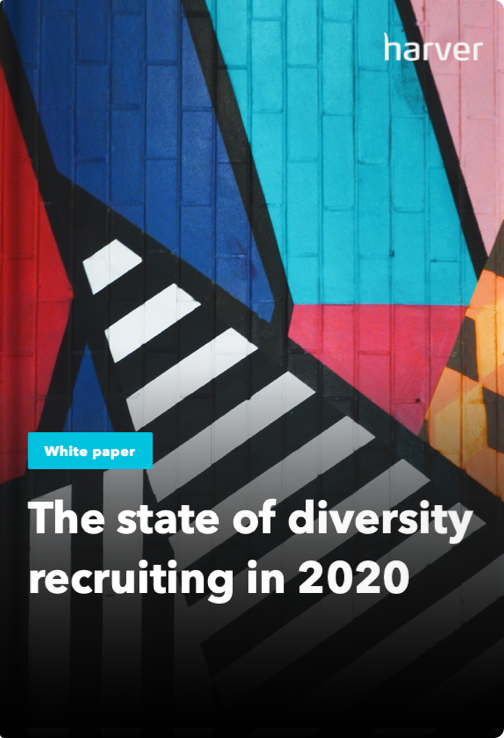Despite the costs and time involved in re-hiring to replace employees who leave, many recruiters view turnover as a necessary evil of operating in industries where hours can be difficult and wages are often low. However, as the availability of labor shrinks and competition for talent becomes more fierce, it’s too risky to assume there’s an endless supply of great employees for your business.
Today, we’ve listed 7 of the most common reasons for people to leave an organization prematurely and what you can do to stop the outflux of personnel.
What’s in?
Like what you see?
Don’t miss out. Subscribe to our monthly digest to get the latest TA and TM resources delivered right to your inbox.
1. Boss trouble
Have you seen the movie Horrible Bosses? If you haven’t, it doesn’t matter, the title says it all; the film is about a bunch of horrendous employers making the lives of their staff close to hell. Sure, as with pretty much any Hollywood production, things are exaggerated and sometimes just plain ridiculous, but the bottomline here is that the relationship employees have with their boss or manager is important.
In fact, it is one of the main reasons for employee turnover – and probably why they say ‘people quit bosses, not jobs’. Employees don’t need to be friends with their manager, but a good mutual understanding is vital. They need to trust their boss and know they can go to their supervisor if they have an issue.
One way of creating such a bond is by talking to your employees; have regular, one-on-one feedback sessions in which they can share their honest opinion with their manager.
2. No recognition
Probably linked to the previous one is a lack of recognition. Not just for the job done or the employee’s performance, but also for initiatives your staff comes up with. Although recognition is not the top reason for people to leave their job, it definitely plays an important role in them staying with the company.
An easy way to solve the recognition issue – as well as the boss trouble by the way – is with a continuous feedback application: People can stay in touch with their colleagues, give each other the recognition they deserve – and need – and improve transparency within the team from anywhere and at any moment. Get rid of the clunky, process driven way of communicating via performance reviews or status updates and start building on organisational agility.
3. Culture misfit
This one is partly intertwined with the previous one. If you don’t give your employees the recognition they feel they deserve they’ll become less happy in their job. This in turn will have an impact on the general atmosphere in the company and as such on your culture.
Your organization’s culture is like its heartbeat and thus vital. In itself, it might not be enough for your employees to leave, but eventually, it will be decisive in their decision to stay or go.
But culture as such is difficult to explain, it’s something that needs to be experienced. Recent developments in HR technology can create exactly that: An immersive preselection experience can show applicants what it is like to work for your company, both from a cultural perspective as well as job-wise.
The state of diversity recruiting in 2020
4. Work buddies – or lack thereof
I’m sure we’ve all thought of this at some point: most of us spend more time with our colleagues than we do with our loved ones. So then it’s no surprise that the people you sit with all day every day play a big part in your overall work happiness, right? Exactly.
Good relationships between co-workers keep your employees with your company. A so-called ‘clan’ feeling goes a long way. A lack thereof will get people to leave for greener pastures.
There are many options when it comes to team building; from a ‘survival’ weekend away on a deserted island to after-work drinks and from a team ski trip to a game of afternoon table tennis. The latter, as it turns out, is more than just a fancy gimmick: it improves hand-to-eye coordination, fast decision making, and reflexes for example. And let’s be honest, a game of ping pong always guarantees a good laugh.
5. No personal growth
Ah yes, the much discussed need for 21st century workers to develop themselves in their jobs. Especially with the millennials entering the work floor, personal growth is more important than ever. This doesn’t have to be growth in terms of promotion per se, but more so in terms of opportunities to grow and develop skills. If you don’t provide your employees with the tools to do so, they might find an employer who does.
What your possibilities are, clearly depends on your budget. If you’re in a big organization and the money is there, you might want to think of a well-structured Learning & Development program. One in which employees get a personalized offer of courses, available at any time.
If you’re in a smaller company and there isn’t much budget you need to work with the resources you’ve got. Think of workshops given by people in the company, for example, a ‘by colleagues for colleagues’ kind of thing – a great way to do some team building at the same time!
6. Not enough flexibility or autonomy
Another thing that’s very much related to the era in which we live. The reality is, if employees don’t have an option to work from home or have flexible hours, that is likely to be a deal breaker for them. The same thing goes for the work that needs to be done: as an employer you provide your staff with the environment and tools they require and then it’s up to them. You need to give them the space – literally and figuratively speaking – to do their job autonomously.
7. Wrong expectations
About the specifics of the role, the vibe within the company, the colleagues, future career possibilities, the list of expectations is endless. Chances are new employees haven’t been fully informed about all aspects involved. A real shame, since unmet expectations are an important reason people often leave only a few weeks in.
This is where HR technology comes in again. We’ve briefly mentioned it earlier in this post, but immersive preselection funnels can help you in painting a very clear picture of the job people apply for and the company they’ll be working for if they’re hired.
Next step
This post isn’t meant to be an exhaustive list of reasons why employees leave. Nor is it an exhaustive overview of how you can prevent unwanted turnover. If you’d like to dive deeper and explore specific methods and tools that can help you reduce unwanted turnover in your organization, you can book a demo below.


